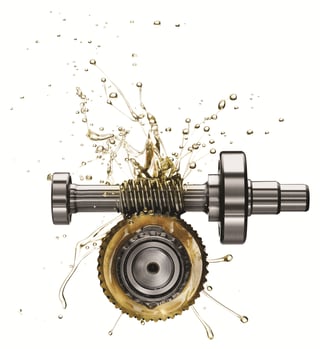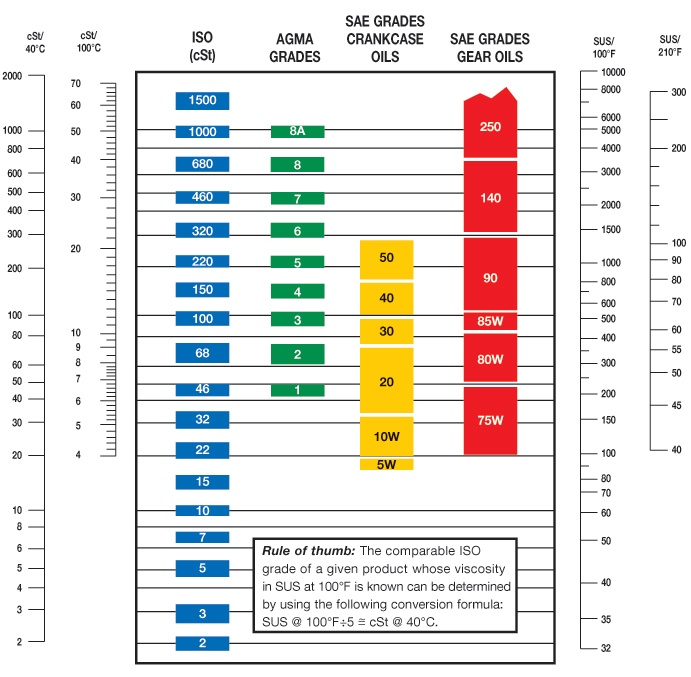Choosing The Best Lubrication For Your Equipment
 Before we get into how to best choose lubricants, a quick disclaimer. Manufacturer recommendations are going to be your best answer as to what lubrication you should be using for your equipment. This post is meant for those who don't have manufacturer specifications to reference, have older equipment, or equipment that has been repaired with parts that are not original.
Before we get into how to best choose lubricants, a quick disclaimer. Manufacturer recommendations are going to be your best answer as to what lubrication you should be using for your equipment. This post is meant for those who don't have manufacturer specifications to reference, have older equipment, or equipment that has been repaired with parts that are not original.
Let's start with a little lubrication theory. Modern day lubrication theory was developed by Obsorn Reynolds. Reynolds designed train axle bearings in the late 1800's and experimented with lubrication. The core of lubrication theory is built around hydrodynamic pressure which is created when a fluid is compressed rapidly. It is this pressure that separates moving parts in mechanical systems. Essentially, the higher the pressure, the better a lubricant can protect equipment from failing due to heat and friction caused by moving parts.
The basic equation for determining hydrodynamic pressure is:
Hydrodynamic Pressure = (width of the bearing) x (radius of bearing)3 x (velocity of shaft) x (fluid viscocity) ÷ (width of the space between shaft and journal)2
Most of this equation is beyond the control of maintenance besides the lubricant viscocity. Unfortunately, choosing a lubricant isn't simply finding the one with the highest rated viscocity. Higher viscocity fluids resist moving into smaller spaces. This becomes problematic when used with tightly fitted bearings that rotate rapidly. The viscocity and type of lubricant you choose should be determined by the other factors in the equation.
Generally,
Loosly fitted bearings that rotate slowly should be lubricated with higher viscosity lubricants such as grease or gear oil.
Tightly fitted bearings that rotate rapidly should be lubricated with lower viscosity mineral or synthetic oil.
Here is a table going over the extremes and anything in between as far as lubricant viscocity options.

Thoughts to avoid:
1. Synthetic oil outperforms convential mineral oil in all cases.
Always go by the manufacturer recommended weights and oil type. Professional engineers have spent the time to test and verify performance of various lubricants on your equipment. Trust their recommendations.
2. High temperature grease is better in all cases.
Grease releases infused oil over time when it is heated. High temperature grease doesn't start to release oil until it reaches it's rated temperature, typically above 250°F. This means at low temperatures, high temperature grease will not release oil into the bearing and will result in increased wear. Again, stick to manufacturer recommendations.
3. Equipment oil needs to be replaced on a schedule like a vehicle.
In many cases, oil doesn't need to be regularly drained and replaced. If the oil is sealed with little chance of contamination, it can perform well for several years with an occasional top off. Vehicle oil needs to be changed due to contamination from fuel combustion.
4. The "W" designation for oil stands for "weight."
The "W" associated with oil viscocity ratings stands for winter. Multi-viscocity oils will have a "W" indicating the viscosity of the oil in cold weather and a separate rating for it's viscocity rating in warm weather. Ex. SAE 10W - 30.
Here are some other helpful articles:
5 Reasons To Do Preventive Maintenance
How to Measure the Effectiveness of Your Maintenance Programs
10 Ways Facility Managers Can Improve the Quality of Work Environments
Ryan Noble
Ryan is Q Ware's Marketing Specialist.